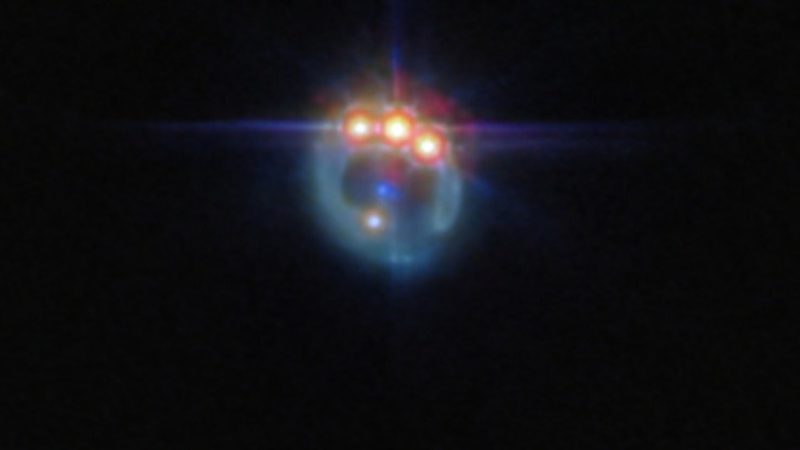The James Webb Space Telescope of the US National Aeronautics and Space Administration (NASA) turned its gaze to a distant astronomical object that visually resembles a ring with precious stones. In fact, this is the quasar RX J1131-1231 at a distance of 6 billion light years from Earth in the constellation Chalice.

Image source: ESA
Such an unusual appearance of the quasar is due to the fact that its image has reached us in a distorted form due to the effect of gravitational lensing. The fact is that the galaxy located between Earth and RX J1131-1231 distorts the image of the quasar in the background, which is why a bright arc and four formations appear in the image. According to the European Space Agency (ESA), the image presented is one of the best “lensed” quasars that have been captured to date.
As for gravitational lensing, Albert Einstein was the first to predict this effect. Without going into detail, the principle of lensing can be compared to how a magnifying glass works. Massive objects in space bend space and time under the influence of gravity, which creates a magnifying effect that allows astronomers to peer deep into outer space. At the same time, when a distant light source is observed through another space object, such as a galaxy, the shape of the distant light source is distorted.
«All matter in the Universe bends the space around it, with more massive objects causing a stronger effect. Around very massive objects, such as galaxies, light passing near them follows this curved space, deviating from its original direction by a noticeable amount. One effect of gravitational lensing is that it can magnify distant astronomical objects, allowing astronomers to study them. Without lensing, such objects would be too dim or distant,” ESA said.